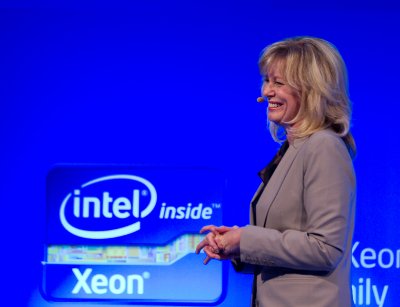Over the past several years Intel has been expanding its influence in the Data Center Infrastructure Management (DCIM) space. It has done it quietly, from behind the scenes.
The processor company is capitalizing on its existing knowledge, intellectual property and long-standing relationships with IT OEMs to capture more of the data center market revenue. It’s doing it through two closely related products: Node Manager and Data Center Manager (DCM).
The Node Manager firmware helps extract power and temperature data, and DCM lives on top of the firmware as middleware, where it aggregates data from each of the firmware feeds for whatever DCIM solution sits on top. Intel has already integrated DCM with a number of major players in the DCIM space, and the list has been growing rapidly.
DCM can be independent of Node Manager. It works directly with some OEM protocols, such as HP’s and IBM’s.
Latest-generation DCM released
Part of Intel’s splashy announcement of the new Xeon processors (E5-2600) in March was a set of additions to the DCM. Intel added new features to the middleware and expanded the list of OEM partners.
It added new types of power data, tracking of equipment serial numbers and of outlet air-temperature. The solution previously tracked inlet air temperature only.
Another new data feed is memory power, tracked separately from central processing unit (CPU) power. The previous generation tracked total server power consumption only.
Serial-number tracking, the third new feature, will help DCIM solutions used for capacity planning. Intel has not made agreements with all OEMs to expose their SKUs to the middleware, but the major ones – HP, Dell and IBM – are already on board.
The list of OEMs that sell DCM-enabled gear has been growing, and Dell’s twelfth-generation PowerEdge servers (powered by Xeon E5-2600) were the most recent addition, announced around the same time Intel announced the latest processors.
Currently the list of DCM-enabled servers also includes the previous generation of Dell’s PowerEdge machines, HP’s fifth- , sixth- and seventh-generation ProLiant servers, a list of HP blades and two of its BladeSystem enclosures. IBM includes DCM with its X series servers and BladeCenter chassis. Cisco Unified Computing System devices are supported as well.
Jeff Klaus, director of data center solutions at Intel, says his team is working to extend the middleware’s reach deeper into the facilities infrastructure.
DCM today supports some facilities devices, such as Uninterrupted Power Supplies and Power Distribution Units.
The company is also working to add some data center networking and storage equipment to the list.
What's DCIM to Intel?
Intel sees a strong and growing data center market and wants to get a bigger piece of the action. DCIM is one way to do it.
“Strategically, Intel realizes that we can’t rely on hardware margins alone,” Klaus says. “When you look at the data center profit, right now, with just silicon alone, Intel has only 6% of the profit pool of the data center. IBM and others have 20-21% because they have a lot of software and services that they sell in the data center.” Intel has the relationships and the knowledge at the platform level it believes can lead it to a higher market share.
DCM path to market
Intel takes DCM to market in three ways. One is through OEMs that have developed power-management solutions. They will take Intel’s set of application programming interfaces (APIs) and “inject” them into their solutions.
The second path to market is through DCIM software providers, which integrate DCM into the solutions they sell to their customers.
The third path is direct sales to data center operators. “There are some [operators] that build their own tools. They don’t license third-party software,” Klaus says. In these cases, Intel will sell them DCM licenses and they will integrate it into their tools themselves. This is not the preferred path to market for Klaus’s team, however.
“That’s not a model that we believe we can scale,” he explains. “We are historically an ingredient supplier. That’s the strategy of this group: to work and expand through the solution providers. DCIM players and the OEMs already have established distribution in more corners of the world in this space from the support perspective, so I think they’ll do a better job for the customer.”
This article first appeared in DatacenterDynamics FOCUS magazine

